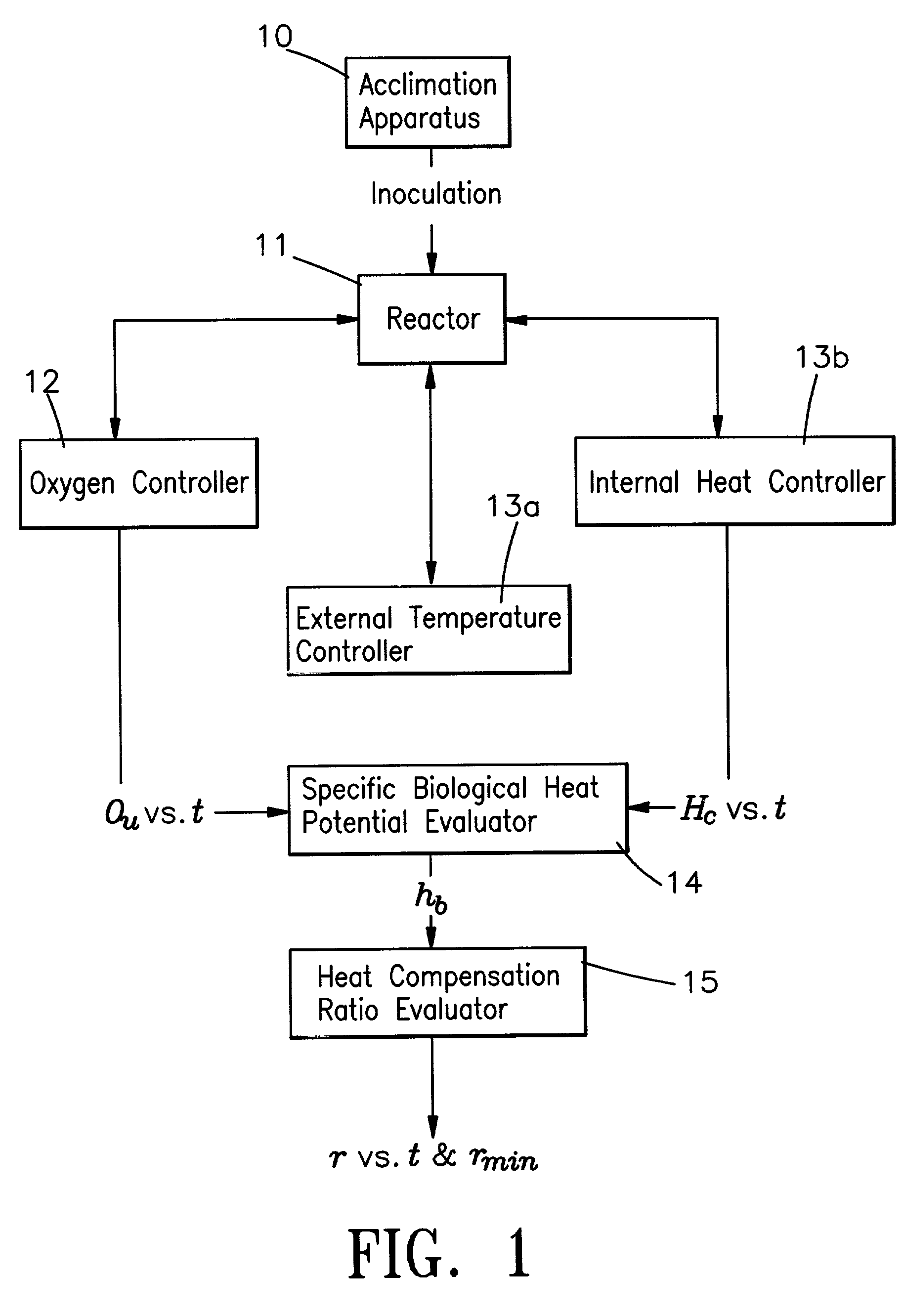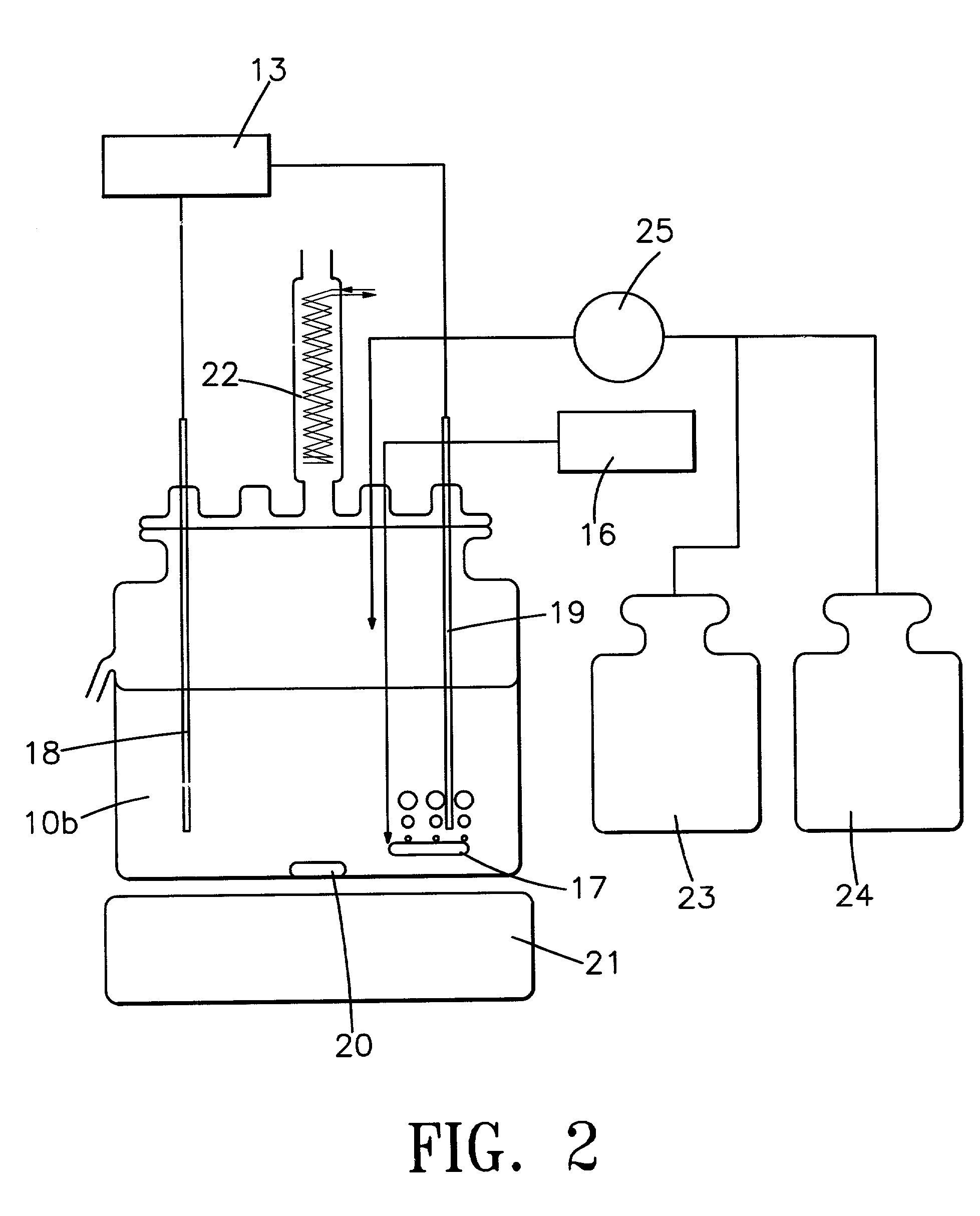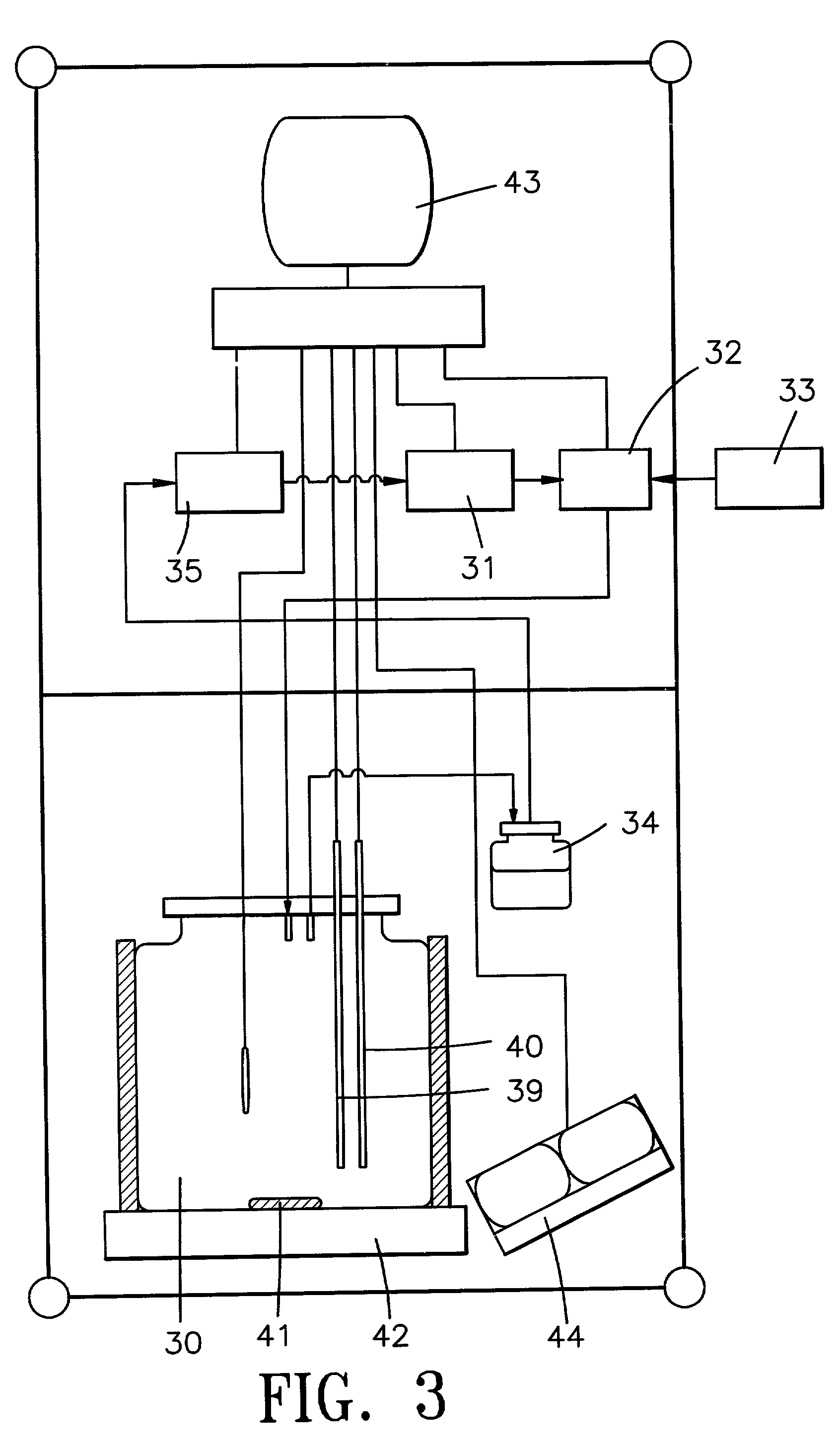Apparatus and method for determining biological heat potential
a technology of biological heat potential and apparatus, applied in the direction of instruments, testing water, material analysis, etc., can solve the problems of low degradation rate, low organic loading, and high excess sludge yield, and achieve the effect of reducing sludge yield, low degradation rate, and low excess sludge yield
- Summary
- Abstract
- Description
- Claims
- Application Information
AI Technical Summary
Problems solved by technology
Method used
Image
Examples
Embodiment Construction
[0026] Acclimation Operation
[0027] Firstly, a 10 liter sludge is transferred from the aeration tank of a full-scale ATAT plant to the reactor of the acclimation apparatus. The reactor is fed on a glucose sample at a loading of 10 g / L COD and an SRT of 10 days. Effluent samples are periodically taken from the reactor for the analyses of COD, pH, and MLSS. Other performance characteristics are also observed for sludge settlability, culture color, forming, and microscope examination to determine the acclimation status.
[0028] The present invention allows for maintaining the normal acclimation operation to provide a stable source of seed culture required for the ATAT tests.
[0029] ATAT Test
[0030] The ATAT test, as shown in FIG. 3, consists of a reactor, an oxygen controller, an internal heat controller, an external temperature controller, a mixing controller, and a signal and data controller capable of the on-line and real-time data acquisition of an oxygen uptake data and a heat compensa...
PUM
 Login to View More
Login to View More Abstract
Description
Claims
Application Information
 Login to View More
Login to View More - R&D
- Intellectual Property
- Life Sciences
- Materials
- Tech Scout
- Unparalleled Data Quality
- Higher Quality Content
- 60% Fewer Hallucinations
Browse by: Latest US Patents, China's latest patents, Technical Efficacy Thesaurus, Application Domain, Technology Topic, Popular Technical Reports.
© 2025 PatSnap. All rights reserved.Legal|Privacy policy|Modern Slavery Act Transparency Statement|Sitemap|About US| Contact US: help@patsnap.com



